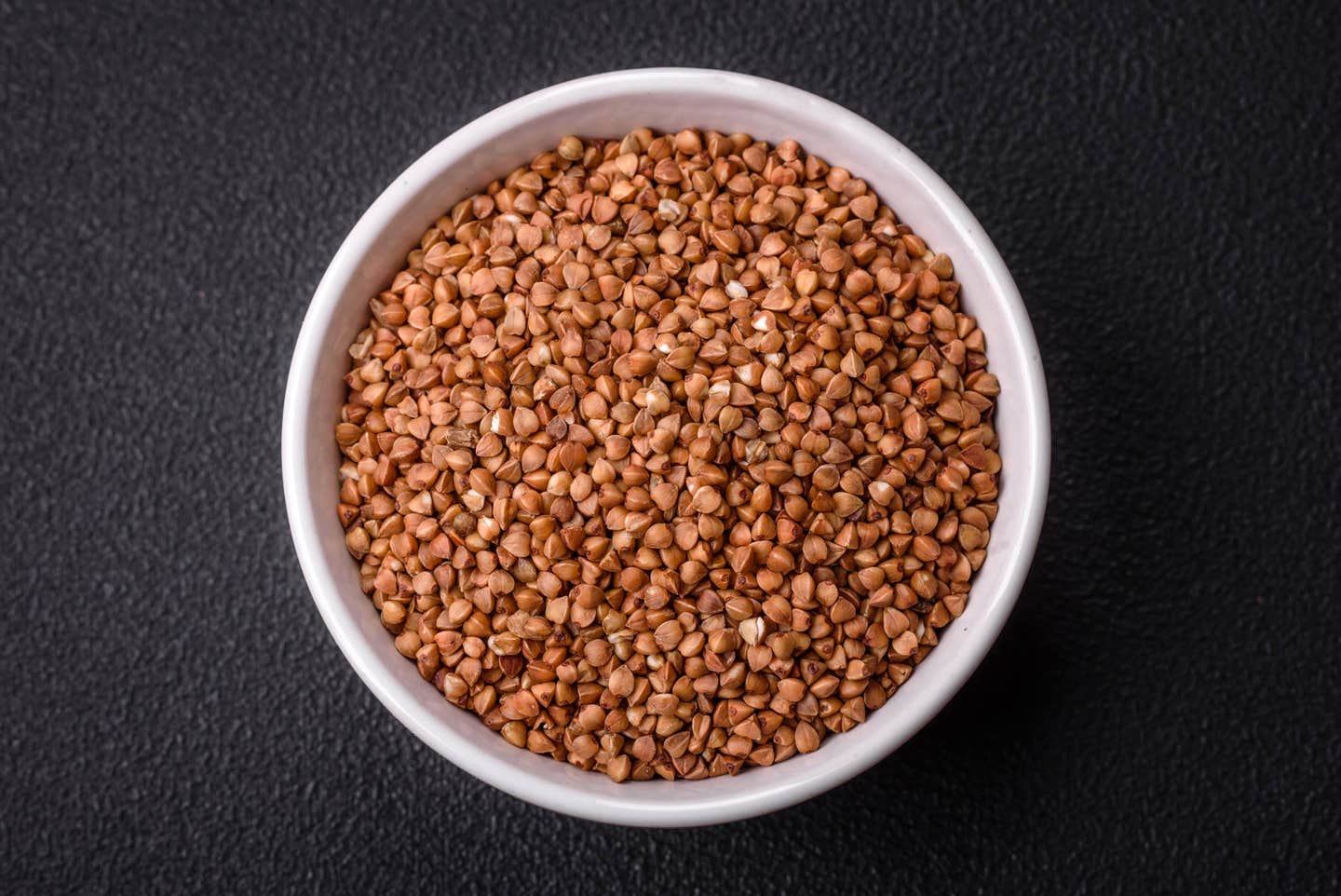By Susan Greeley, RD, Institute of Culinary Education,
Last Updated:Wild rice comes from the seed of an aquatic grass plant, the grains of which are harvested as wild rice. It is sometimes called water rice, as it grows naturally in water, or manoomin (which translates in Ojibwe to "good berry"). Wild rice is native to North America and has been a staple in the diets of some Native American tribes for centuries. It is cultivated in lakes and paddies in the Great Lakes and Northern Lakes regions of the United States and into Canada. Beginning in the 1970s, California producers began growing wild rice in paddies, making it more accessible and affordable, though it is still pricier than other rice varieties. Look for it in grocery and health food stores and gourmet shops. You can also order it from Native Harvest, which sells organic wild rice that's been hand-harvested by tribal members using traditional methods. It is highly nutritious and a good source of fiber and B vitamins.
With a rich, nutty flavor and chewy texture, wild rice is used in a variety of foods, such as breakfast cereals, soups, casseroles, salads, and even desserts. Blends of wild rice with long-grain rice are popular, as well.
Where to Buy Wild Rice
Authentic organic wild rice, hand-harvested by tribal members using traditional methods, is available for purchase online at Native Harvest.
How to Cook Wild Rice
Wild rice can be difficult at first and takes time to perfect. Here are a few general tips for success, plus instructions for cooking wild rice on the stove, in an Instant Pot, or in a rice cooker.
General Tips
- Rinse first: For best results, rinse rice in cold water before cooking. This removes surface starch that might cause gumminess. If you don’t have a fine mesh sieve to rinse rice in, you can place rice in a pot, add enough water to cover, gently swish, carefully drain off water, and repeat.
- Use the right ratio: For stovetop cooking, start with a ratio of one-part rice to three-parts cooking liquid. (You can use water or broth.) One cup dry yields roughly 3 cups cooked.
- Put a lid on it: When cooking wild rice, make sure your pot or rice cooker has a cover.
- Stir occasionally: While the rice simmers, you may want to stir a few times to make sure your rice isn’t sticking to the bottom of the pot.
- Check on it: Wild rice can take anywhere from 30 to 50 minutes to cook. To avoid overcooking the rice, you may want to taste it for texture while cooking. When done, the kernels will look tender and may burst open, and in “perfectly” cooked wild rice you will be able to see the cream-colored center of the grains. Darker wild rice requires a longer cooking time. If you like it chewy, reduce the cooking time to closer to 30 minutes.
- Store it: Cooked, it will keep in the refrigerator for a week and up to six months in the freezer.
Stovetop
Bring 3 cups water (or broth) to boiling. Rinse 1 cup wild rice in a mesh strainer under cold water. Add rinsed rice to pot; return to boiling. Reduce heat and simmer, covered, for 30 to 45 minutes or longer if needed. If any liquid remains when rice is done, drain it off using a sieve.
Instant Pot
Rinse 1 cup wild rice in a mesh strainer under cold water. Transfer to an Instant Pot and add 1⅓ cups water. (Note different brands of wild rice may need a slightly different or higher ratio of water, so check the package instructions.) Cook at high pressure for 20 minutes, followed by a 10-minute natural release of pressure. Fluff cooked rice with a fork. Serve as a stand-alone side dish or add to other dishes/recipes.
Rice Cooker
A rice cooker is an easy, convenient way to cook wild rice. Rinse 1 cup rice in a mesh strainer under cold water. Add 2 cups of water with rice and cook 50 minutes or until the rice is fluffy and tender. Let stand for another 10 minutes before serving.
Savory Fennel-Leek-Ginger Wild Rice
Recipe courtesy of Susan Greeley, MS, RDN and chef-instructor at the Institute of Culinary Education
(Makes 4 cups)
- 3 cups low-sodium vegetable broth
- 1 cup wild rice, rinsed
- 1 small leek, chopped (2 cups)
- 1 cup chopped fennel
- 2 tablespoons finely minced ginger
- Sea salt, to taste
- Bring vegetable broth to boiling in a heavy saucepan. Add wild rice. Return to boiling; then reduce heat to a simmer. Cook, covered, 35 to 40 minutes. If rice looks tender and has burst open, turn off the heat and let stand for 10 minutes. If not yet done, let cook another 10 minutes. If any liquid remains, drain off using a strainer and let stand.
- While rice is cooking, in a large skillet or pot combine leek, fennel, ginger, and salt. Add 2 cups water; bring to boiling. Reduce heat to simmer, and cook, covered, 45 minutes. Remove lid; let cook 10 minutes more or until liquid has evaporated.
- Put cooked rice in a large serving bowl. Add cooked vegetables. Stir well and serve.
More Wild Rice Recipes
Try wild rice in one of these healthy plant-based recipes from Forks Over Knives.
- Creamy Wild Rice Soup
- Caribbean Rice
- Stirred-Not-Fried Rice
- Wild Rice, Cabbage and Chickpea Pilaf Recipe
- Ethiopian Rice Pilaf Recipe
- Pomegranate–Wild Rice Salad
For more guidance in healthy cooking, check out Forks Meal Planner, FOK’s easy weekly meal-planning tool to keep you on a plant-based path. To learn more about a whole-food, plant-based diet, visit our Plant-Based Primer.
This article was originally published on Nov. 5, 2021, and has been updated.

Related News
Get Our Best Price OnOn Forks Meal Planner

Forks Meal Planner takes the hard work out of making nutritious meals the whole family will enjoy.
SAVE $200 ON OUR ULTIMATE COURSE

Join our best-selling course at a new lower price!



